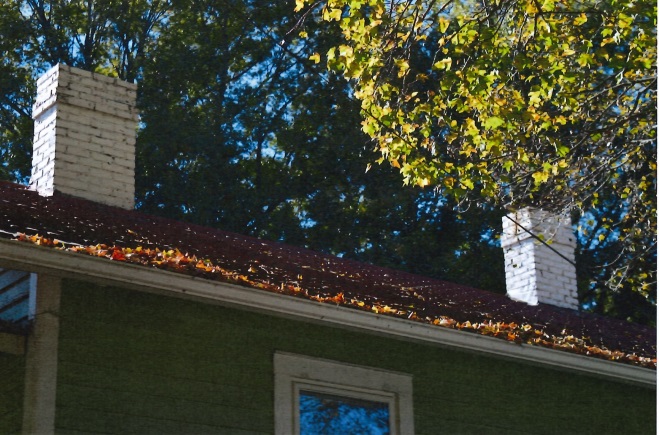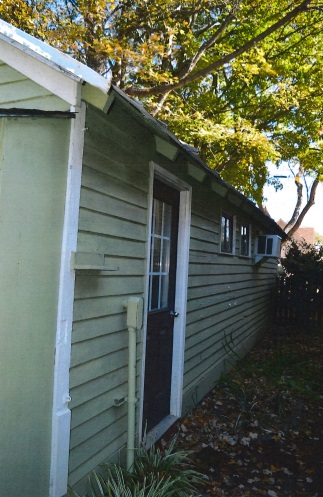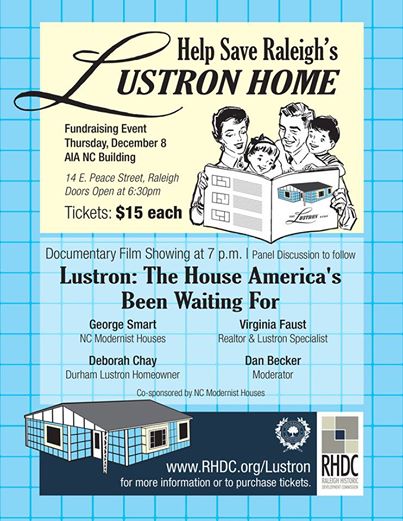Brought to you by Rufty-Peedin Design Builders
Wednesday, December 7, 2016
Major/Minor Work Wednesday is a semiregular feature that takes a look at recently filed applications with the Raleigh Historic Development Commission.
It doesn’t get much more major than this: an historic Craftsman bungalow home built in 1924 could soon be torn down and eventually replaced with a brand-new house.

934 N. Boylan could soon be torn down
UPDATE:
One of the wonderful folks over at the Raleigh Historic Development Commission has reached out to let us know the application for this project was postponed by 365 days. While “soon” can be a very relative term, there won’t be any movement on this for more than a year. Now back to your regularly scheduled column.
The application itself is a bit puzzling. It delves into the details of what the home’s current owners hope to do in the future: build another bungalow house with a similar look they hope would blend in well with the neighborhood. However, all the text regarding these plans has been X’d out and overlaid with a note stating “Only demolition is to be considered in this application.”
So even though those future plans are still very much legible, and contain some pretty interesting details such as “If possible, tin roof tiles from existing structure will be salvaged to cover front porch roof of new home. If not possible to remove intact tiles, porch roof will be metal to match main roof,” we’ll abstain from getting into them here, as it’s possible they may change by the time the owners file the application for the new home.
Still, a metal roof is pretty, well, metal. And a lot of fun in a rainstorm.
UPDATE PART II:
Per our friends over at RHDC, plans for a replacement structure will eventually be submitted in a separate application.
Instead, we’ll take a brief look at the history of this home at 934 N. Boylan Avenue and why it is the owners are required to file a Certificate of Appropriateness application with Raleigh’s Historic Development Commission in order to tear it down.

Metal roof!
That second part is easy: the house is one of 88 “contributing historic resources” in the Glenwood-Brooklyn Historic District. Located inside-the-beltline (of course), the GBHD is “roughly bounded by W. Peace Street, Wade Avenue, Glenwood Avenue, St. Mary’s Street & the Norfolk Southern rail line.”
Therefore, before 934 N. Boylan can be modified or, in this case, torn down, the owners need to seek approval from the RHDC.
As for 934 itself, it’s officially known as the “Eupha O. Brogden House” and was described in the original Glenwood-Brooklyn Historic District application as a “One-story frame Craftsman bungalow with weatherboard siding and a shingle-pattern pressed metal front-gable roof.”
Speaking of that pressed metal roof, the home’s previous owner — from 2002 until it was sold to in June of this year — was Martin Stankus, who runs Tin Roof Pottery. We can only imagine he drew inspiration for that name from his historic home. As it happens, Stankus once displayed his wares at the annual Boylan Arts Walk, which I had the pleasure of attending this past Sunday.
While I didn’t notice if Stankus had anything on display this year, I did have the good fortune of checking out the artwork of none other than Anne Rufty, wife of Drew Rufty of Rufty-Peedin Design Builders. While I’ve come to view construction as something of an art form during my two-and-half years of writing this column, Anne’s work is the kind of art you’d see hanging in a museum. Seriously impressive stuff:

And no, mentioning Mrs. Rufty’s paintings was not a part of my sponsorship agreement, but if Rufty-Peedin signs back on for another year, maybe I’ll try and negotiate one of her pieces as part of my payment. If I can work that out, I guess I could refer to the outcome as…the Art of the Deal. Sorry.
But back to 934 N. Boylan/the Eupha O. Brogden House. Brogden was apparently the manager of a car rental business named the “Self Drive-It System” back in the 1920s, which is pretty interesting, because we didn’t even know there *were* car-rental agencies back then, let alone self-driving cars.

The shed/garage/workshop
Not surprisingly, given Brogden’s business, the house is accompanied by a “garage/workshop,” also built in 1924. It was described in that original application as a “one-story frame with weatherboard siding, a metal-sheathed gable roof, and a single vehicle bay with vertical board doors.”
The more recent application, the one filed by its new owners with the RHDC, describes the old garage/workshop as a “shed” — although we imagine Stankus may have used it as a workshop for pottery business: why else would there be a window-unit air conditioner? To keep his lawn mower comfortable in the hot summer months?
In yesterday’s edition of Teardown Tuesday we looked at the impending demolition of two historic late 19th/early 20th century structures at the corner of Wilmington & Martin downtown. One of our readers noted that “It’s pretty stupid to tear down irreplaceable Italianate buildings with a skyscraper that can be built anywhere.” That’s fair.
But in the case of the Brogden House, as long as the owners follow through with their initial plans of rebuilding a structure that’s very similar in design and appearance to the original, we think the future plans for 934 N. Boylan are anything but stupid.
 PS: If you’re a fan of historic homes and want to support the Raleigh Historic Development Commission, be sure to attend a very special screening of “Lustron: The House America’s Been Waiting For” tomorrow night at the AIA NC House at 14 E. Peace Street!
PS: If you’re a fan of historic homes and want to support the Raleigh Historic Development Commission, be sure to attend a very special screening of “Lustron: The House America’s Been Waiting For” tomorrow night at the AIA NC House at 14 E. Peace Street!
If we can manage to score free tickets, we’ll see you there!
Lustron: The House America’s Been Waiting For (2004)
The rise and fall of engineering visionary Carl Strandlund and his post-World-War-II brainchild, the Lustron porcelain-enameled-steel manufactured house.